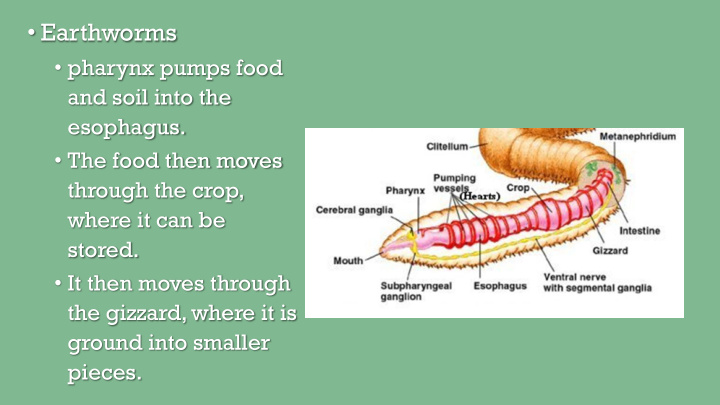



• Earthworms • pharynx pumps food and soil into the esophagus. • The food then moves through the crop, where it can be stored. • It then moves through the gizzard, where it is ground into smaller pieces.
CIRCULATION • Annelids typically have a closed circulatory system • blood is contained within a network of blood vessels • Ventral and Dorsal Vessels • Smaller vessels connect dorsal to ventral • Supply blood to internal organs • Dorsal bllod vessel function like a heart • Contracts and pumps blood
RESPIRATION • Aquatic annelids often breathe through gills. • Feather duster worms • Land-dwelling annelids take in oxygen and give off carbon dioxide through their moist skin • Diffusion • Secrete a thin protective coating of mucus which keeps skin moist
EXCRETION • Two types of waste • Digestive waste • Passes through anus • Cellular Waste • Eliminated by nephridia • Filter fluid in coelom
RESPONSE • Most annelids have a well-developed nervous system • consisting of a brain and several nerve cords. • Free living marine • Developed sense organs • Sensory bristles • Statocysts • Chemical receptors • Light detection
MOVEMENT • Annelids have two groups of body muscles that function as part of a hydrostatic skeleton. • Longitudinal muscles • Front to rear • Contract to make worm shorter and fatter • Circular muscles • Around each segment • Contract to make worm longer and thinner • These muscles contract alternatively to move
REPRODUCTION • Most annelids reproduce sexually. • Earthworms are hermaphrodites. • Two worms attach to each other, exchange sperm • store the sperm in special sacs.
Recommend
More recommend